When a company grows its demand for computing resources grows as well. It works for regular companies as for providers, including those renting out dedicated servers. When the total number of racks exceeds 10 you’ll start facing issues.
How do inventory servers and spares? How to maintain a data center in good health, locating and fixing potential threats on time. How to find the rack with broken equipment? How to prepare physical machines to work? carrying out these tasks manually will take too much time otherwise will require having a huge team of administrators in your IT department.
However, there is a better solution – using special software that automates Data Center Management. Let’s have a review of the tools for running a Data Center that we have on the market today.
Table of Contents
1. DCImanager
DCImanager is a platform for managing physical equipment: servers, switches, PDU, routers; and monitoring server and data center resources. It helps to optimize the use of computing power, enhance the efficiency of the IT department, and flexibly transform the infrastructure according to business tasks.
DCImanager can be flexibly integrated into the IT infrastructure of any complexity. Hundreds of companies from various industries (including hosting, ICT, data centers, production, finance. etc.) use it to accomplish their tasks.
The main features of DCImanager are:
- DCIM with multi-vendor support and equipment inventory.
- Monitoring and notifications system.
- Remote access to servers.
- Managing switches, physical networks, and VLAN.
- Server sales automation for hosting providers.
- Staff (or client) access to selected infrastructure nodes.
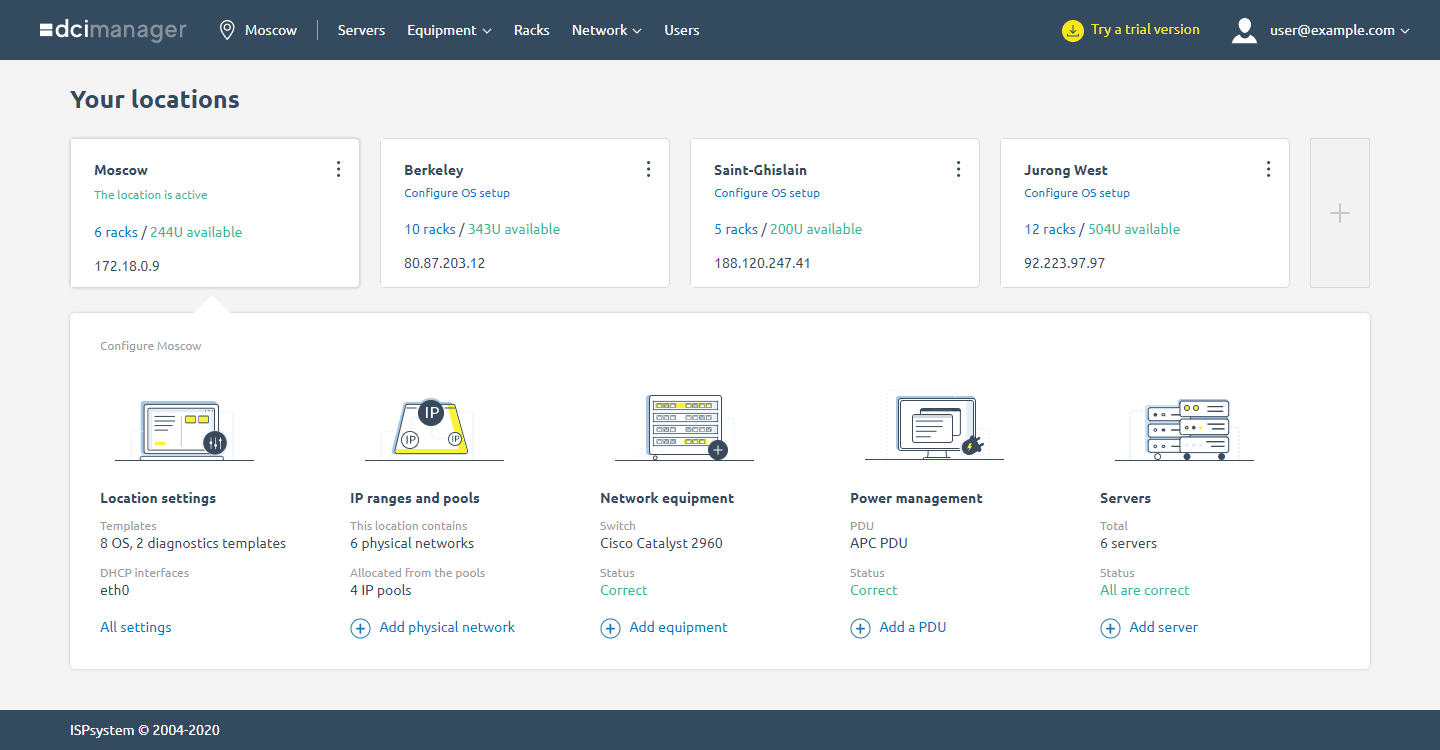
2. Opendcim
Currently, it’s the one and the only free software in its class. It has an open-source code and is designed to be an alternative to commercial DCIM solutions. Allows to keep inventory, draw a DC map, and monitor temperature and power consumption.
On the other hand, it doesn’t support remote power-off, server rebooting, and OS installation functionality. Nevertheless, it is widely used in non-commercial organizations all around the globe.
Thanks to its open-source code, Opendcims should work fine for companies having their own developers.
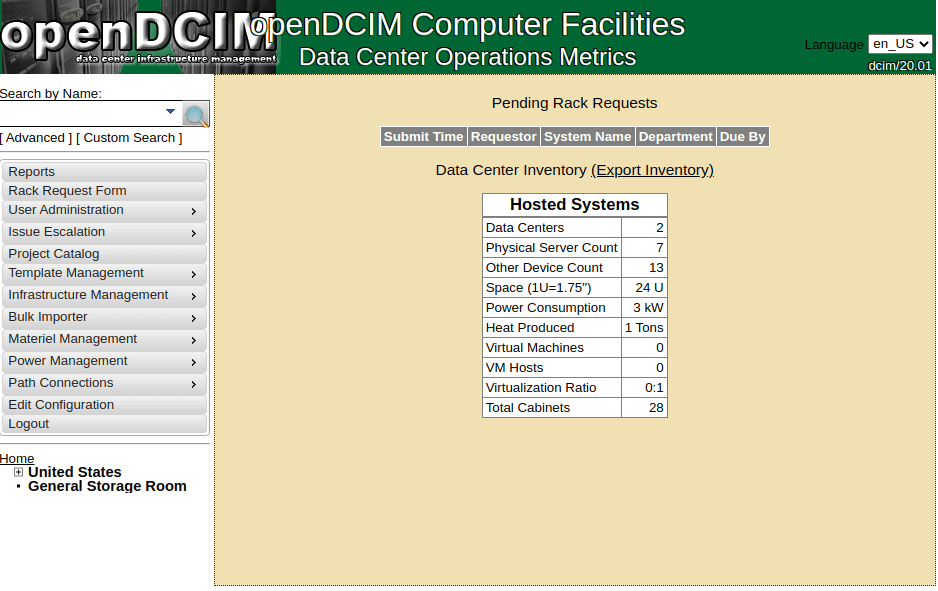
3. NOC-PS
A commercial system, designed for provisioning physical and virtual machines, has a wide functionality for advanced preparation of equipment: OS and other software installation and setting up network configurations.
There is WHMCS (Web Hosting Billing & Automation Platform) and Blesta (Billing and Client Management Platform) integrations. However, it won’t be your best choice if you need to have a Data Center map at hand and see the location of the rack.
NOC-PS will cost you 100€ per year for every 100 dedicated servers bundle. Suits for small-to-middle-scale companies.
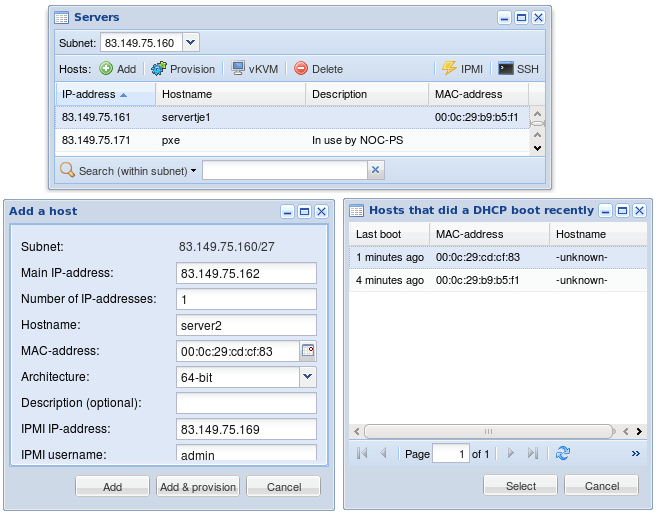
4. EasyDCIM
EasyDCIM is a paid software mainly oriented on server provisioning. Brings OS and other software installation features and facilitates DC navigation allowing to draw a scheme of racks.
Meanwhile, the product itself doesn’t include IPs and DNS management, control over the switches. These and other features become available after additional modules installation, both free and paid (including WHMCS integration).
The basic plan offers 100 server licenses starting from $99 per year. Due to the pricing, EasyDCIM may be a bit expensive for small companies, while middle and large companies can give it a try.
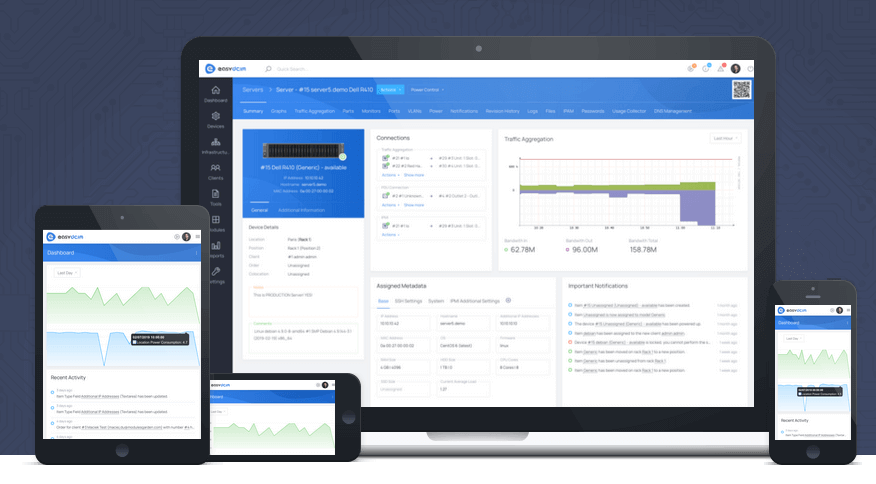
5. Ansible Tower
Ansible Tower is an Enterprise-level computing infrastructure management tool from RedHat. The main idea of this solution was the possibility of a centralized deployment of servers for the different user devices.
Thanks to that Ansible Tower can perform almost any possible program operation with integrated software and has an amazing statistics collecting module. On the dark side, we have a lack of integration with popular billing systems and pricing.
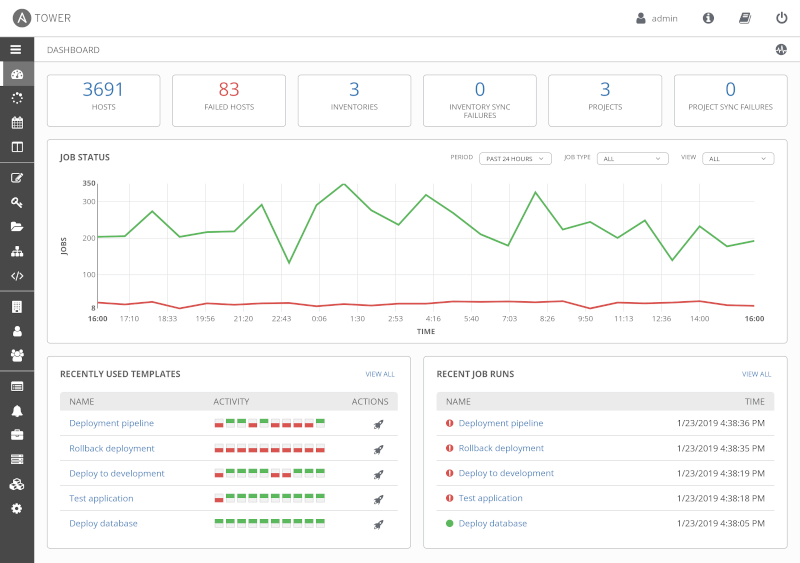
6. Puppet Enterprise
Developed on a commercial basis and considered as an accessorial software for IT departments. Designed for OS and other software installed on servers and user devices both at the initial deployment and further exploitation stages.
Unfortunately, inventorying and the more advanced interaction schemes between devices (cable connection, protocols, and others) are still under development.
Puppet Enterprise has a free and fully-functional version for 10 computers. A yearly license cost is $120 per device.
Can work for big corporations.
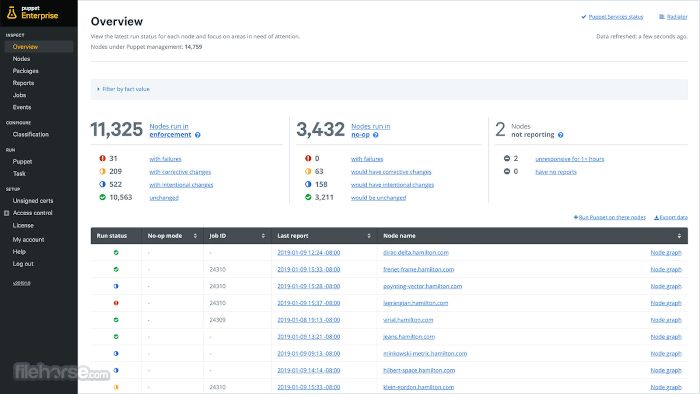
7. NetBox
NetBox is an open-source IP address management and data center infrastructure management platform, which was created by the network team at DigitalOcean to store information about your networks, virtual machines, inventories, and many more.
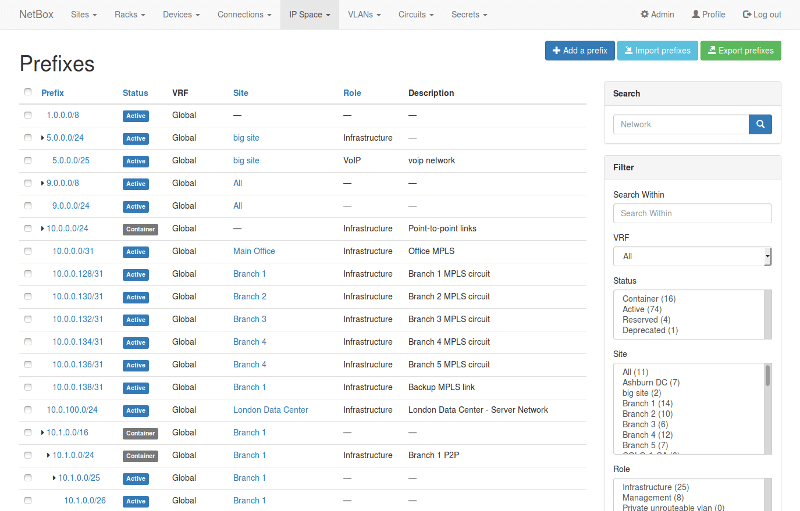
8. RackTables
RackTables is an open-source tiny tool for data center and server room asset management to keep track of hardware assets, network addresses, space in racks, network configuration, and much much more!
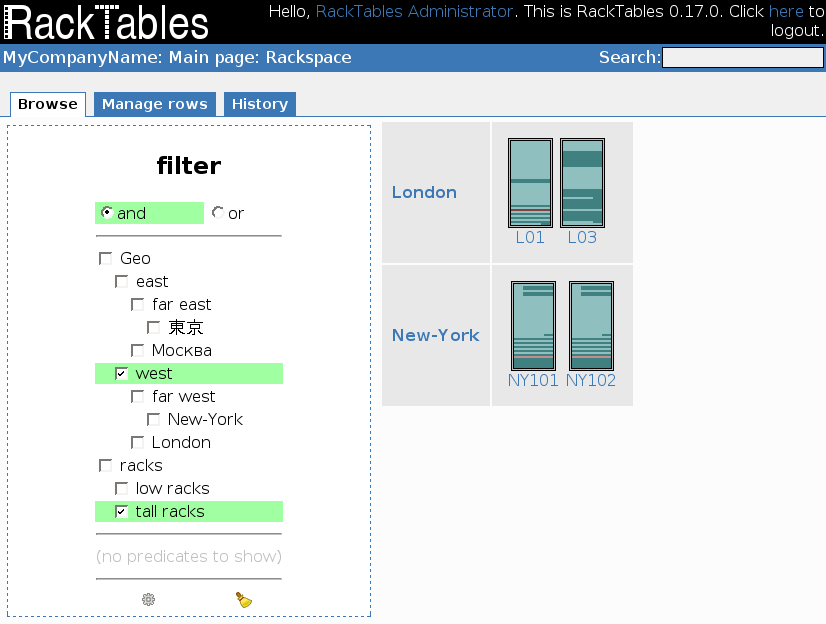
9. Device 42
Mostly designed for Data Center monitoring. Has great tools for inventorying, and builds hardware/software dependence maps automatically. DC map drawn by Device 42 reflects temperature, spare space, and other parameters of a rack as in graphics as marking the racks with a specific color. However, software installation and billing integration aren’t supported.
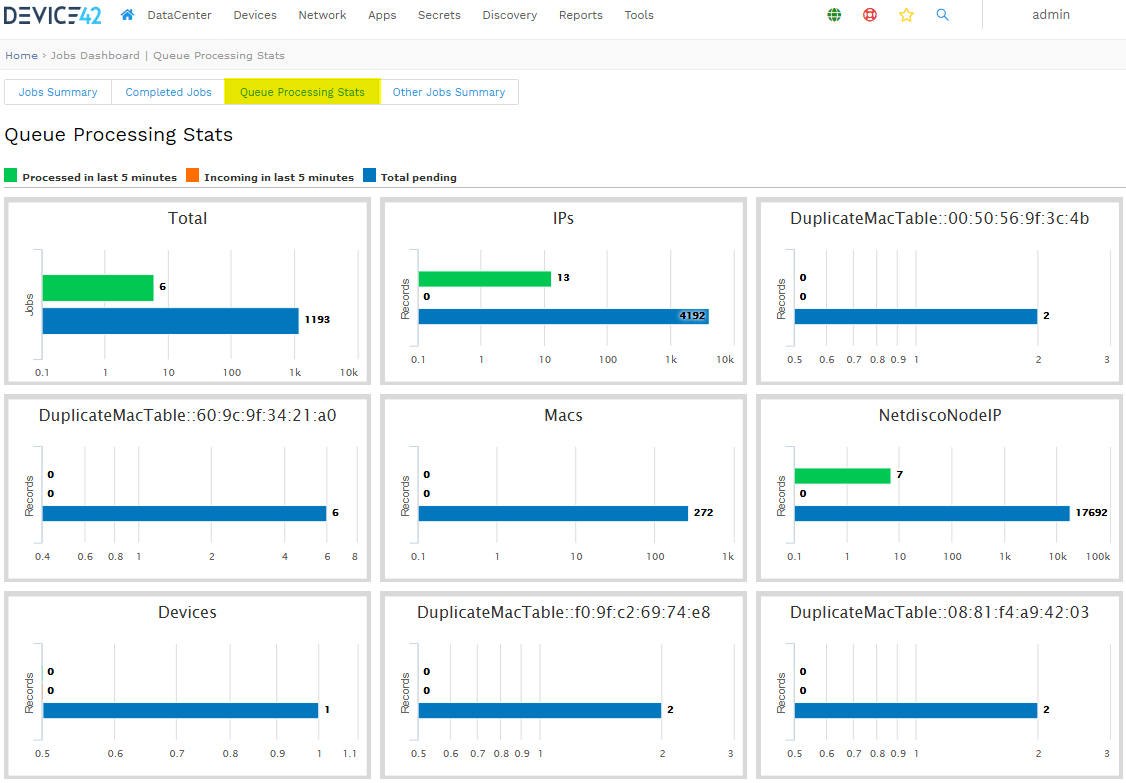
10. CenterOS
It’s an operating system for Data Center management with the main focus on equipment inventorying. Besides creating a DC map, schemes of racks, and connections a well-thought-integrated system of server statuses facilitates managing the internal technical works.
Another great feature allows us to find and reach out to the right person related to a certain piece of equipment within a few clicks (it may be an owner, technician, or manufacturer), which can be truly a handful in case of any emergencies.
The source code for Centeros is closed and pricing is available only upon request. A mystery about the pricing complicates determining a target audience of the product, however, it’s possible to make an assumption that CenterOS is designed mostly for larger companies.
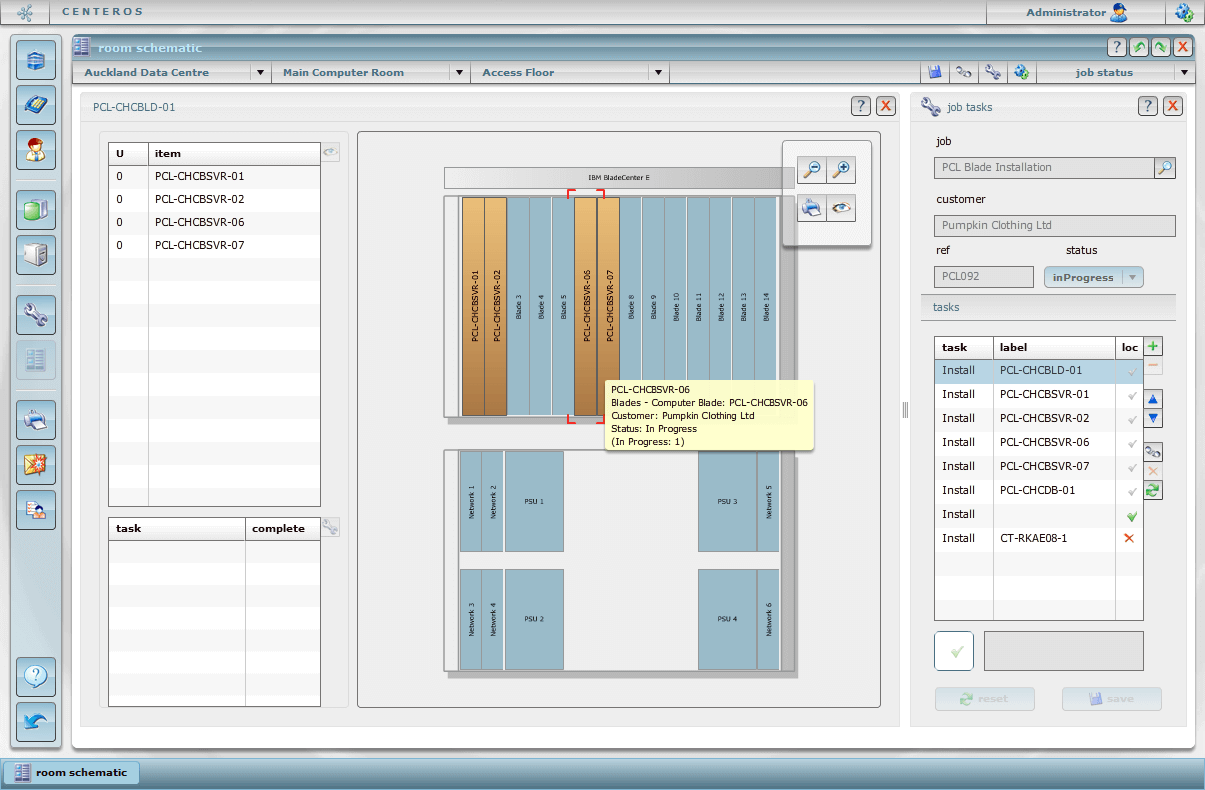
11. LinMin
It’s an instrument for preparing a piece of physical equipment for further usage. Uses PXE install the chosen OS and deploys the requested set of additional software afterward.
Unlike most of its analogs, LinMin has a well-developed backup system for hard drives, that speeds up an after-crush recovery and facilitates the mass deployments of the servers with the same configuration.
Price starts from $2400/year for 100 servers. Middle-to-large companies can keep LinMin in mind.
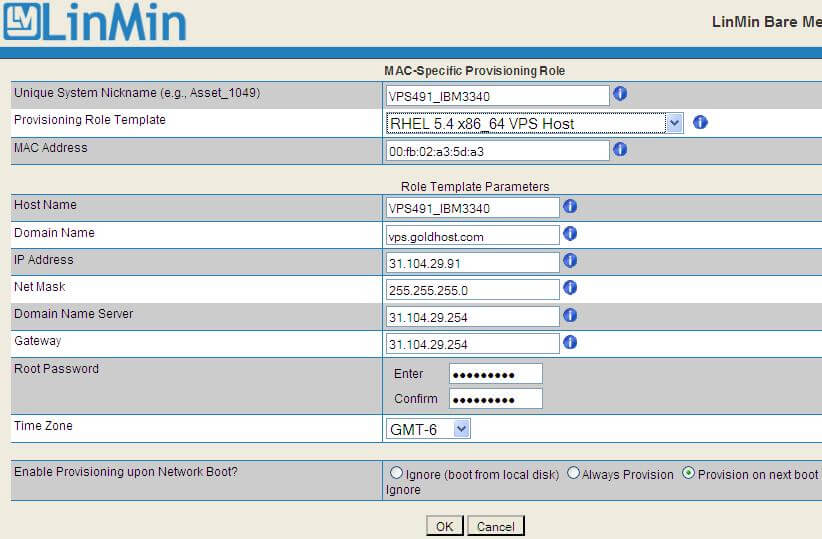
12. Foreman
Foreman is an open-source and perfect life-cycle management application for physical and virtual servers, that give Linux system administrators the capability to easily automate repetitive jobs, rapidly deploy applications, and proactively manage servers, on-premise or in the cloud.
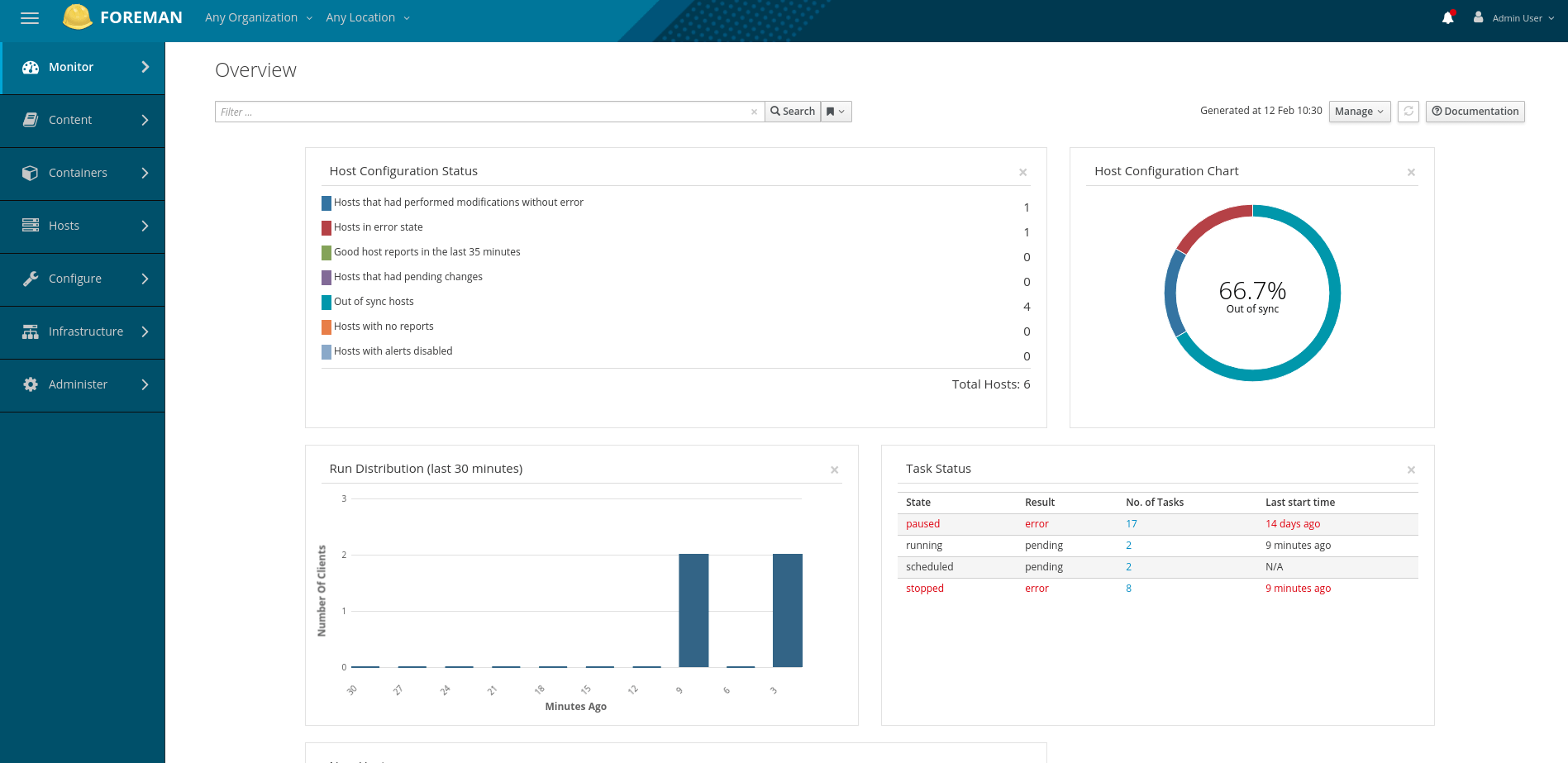
Conclusion
Now let’s summarize everything. I would say that most of the products for automating operations with a high volume of infrastructure, that we have on the market today, can be divided into two categories.
The first is mainly designed for preparing equipment for further exploitation while the second manages inventorying. It’s not so easy to find a universal solution that will contain all the necessary features so you can give up on the many tools with a narrow functionality provided by an equipment manufacturer.
However, now you have a list of such solutions and you are welcome to check it yourself. It’s worth noticing that open-source products are on the list as well, so if you have a good developer, it’s possible to customize it for your specific needs.
I hope that my review will help you to find the right software for your case and make your life easier. Long life to your servers!


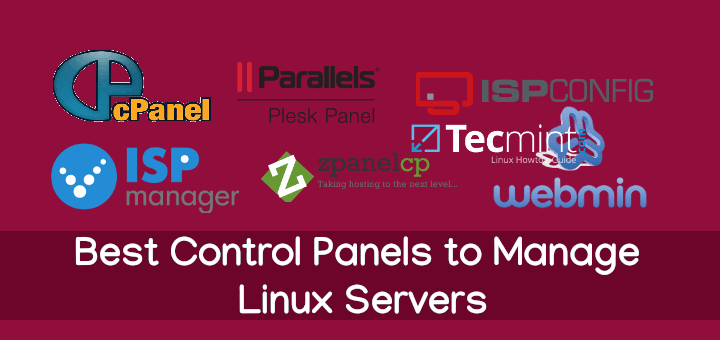

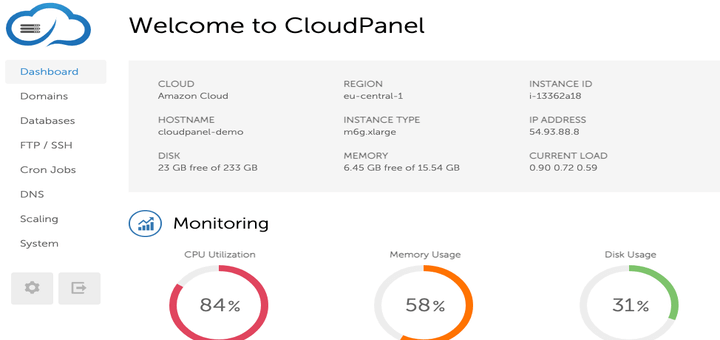
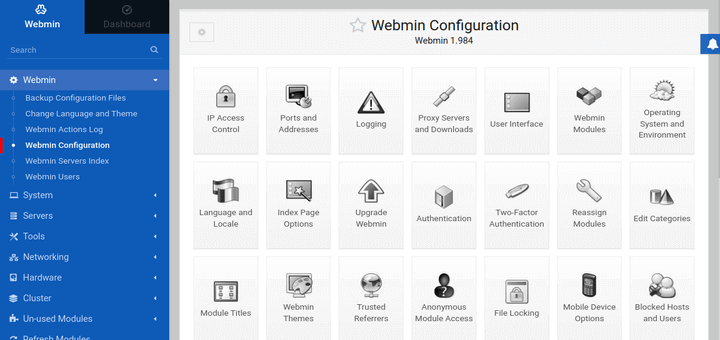
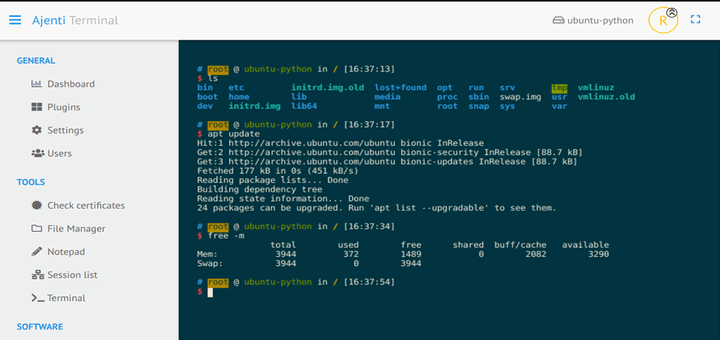
Please add Foreman to the list.
@Tomas,
Added Foreman to the article as suggested..
Thanks
We’ve been using EasyDCIM for over a year now and its automation is beyond great. Helps us save tons of workload and manpower on a daily basis.
Ubersmith is another data center management software, although it can get quite expensive.
We are using Netbox from DigitalOcean which is OpenSource : https://github.com/digitalocean/netbox
One other good “asset management” solution is RackTables..